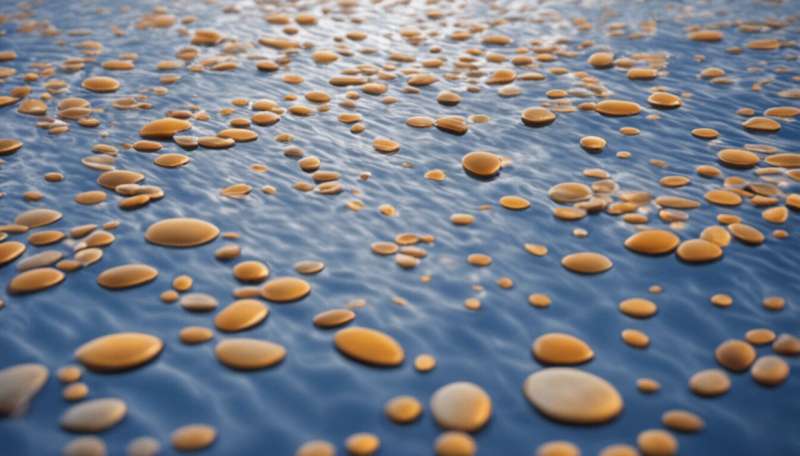Stormwater could be a large source of microplastics and rubber fragments to waterways

In cities, heavy rains wash away the gunk collecting on sidewalks and roads, picking up all kinds of debris. However, the amount of microplastic pollution swept away by this runoff is currently unknown. Now, researchers in ACS ES&T Water report that stormwater can be a large source of microplastics and rubber fragments to water bodies and, with a proof-of-concept experiment, show that a rain garden could keep these microscopic pieces out of a storm drain.
Most cities' storm drains end up discharging directly into wetlands, creeks or rivers. Rainwater running into these drains becomes a concoction of whatever is on the ground, including dirt and grass clippings, leaked car fluids, fertilizer and garbage. Recently, researchers also found that strong rains can displace microplastics, sweeping them into stormwater, but the importance of this runoff as a source of contamination is not well understood. So, Chelsea Rochman and colleagues wanted to see whether microplastics and other tiny particles are carried into waterways by storms in urban areas, and whether a rain garden could prevent that from happening.
The researchers collected water during heavy rainstorms from 12 streams flowing into the San Francisco Bay. First, they separated floating microparticles—which they define as less than 5 mm in size—by color and shape and tallied them, finding higher concentrations in the streams than previous researchers had found in treated wastewater that was discharged into the bay. Microscopic fibers and black rubbery fragments were the most common microparticles, while natural debris, glass, paint and wool were only minor components. Then, the team identified a subset of plastic- or rubbery-looking fragments as being made mostly of plastic polymers or other synthetic materials, and many of the black rubbery particles originated from tires. Finally, the researchers compared the microparticles entering a rain garden to those at the garden's outflow into a storm drain. Their results showed that the rain garden captured 91 to 98% of the microparticles and 100% of the black rubbery fragments during three rain events. The researchers say that while rain gardens are known to reduce the amount of metals, nutrients and other pollutants in stormwater runoff, this study shows rain gardens could also be effective at reducing microplastic pollution.
More information: Larissa M. Werbowski et al, Urban Stormwater Runoff: A Major Pathway for Anthropogenic Particles, Black Rubbery Fragments, and Other Types of Microplastics to Urban Receiving Waters, ACS ES&T Water (2021). DOI: 10.1021/acsestwater.1c00017
Provided by American Chemical Society





















